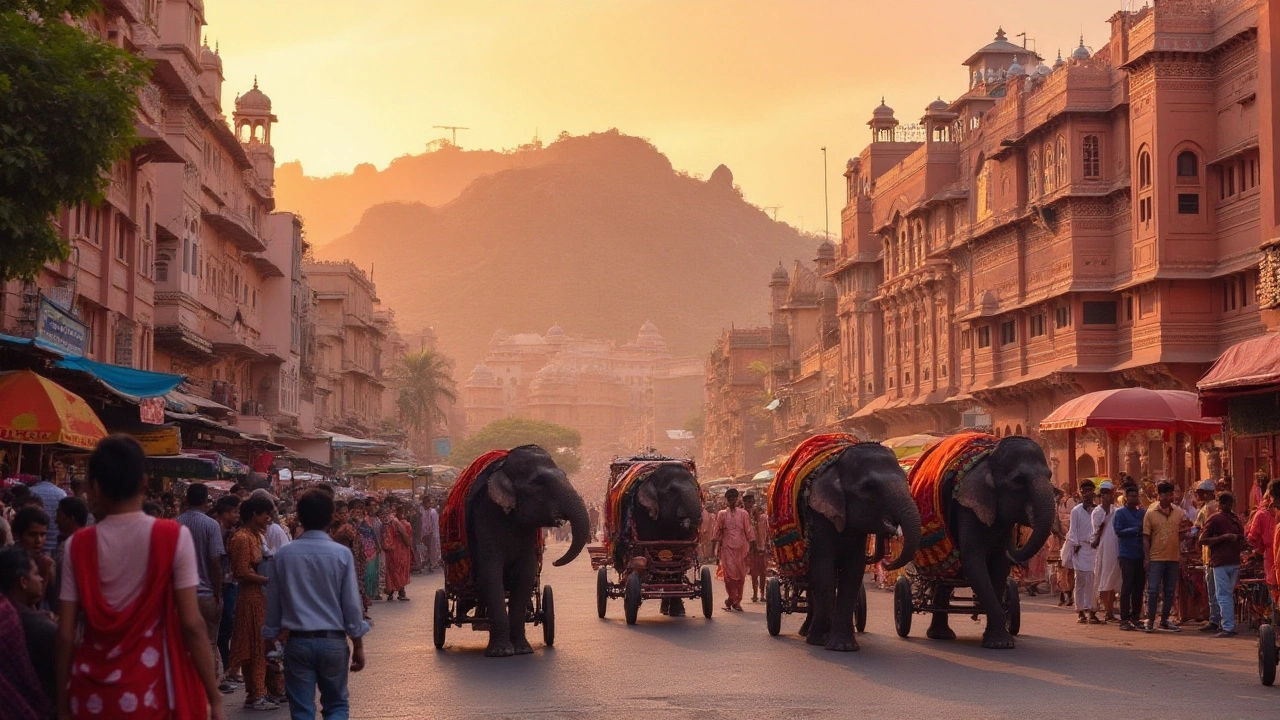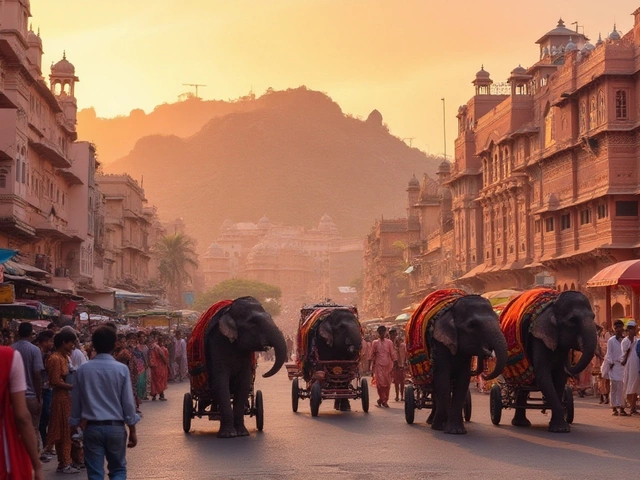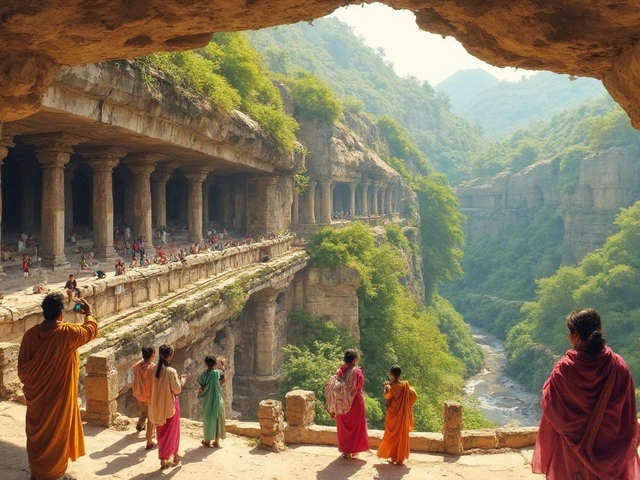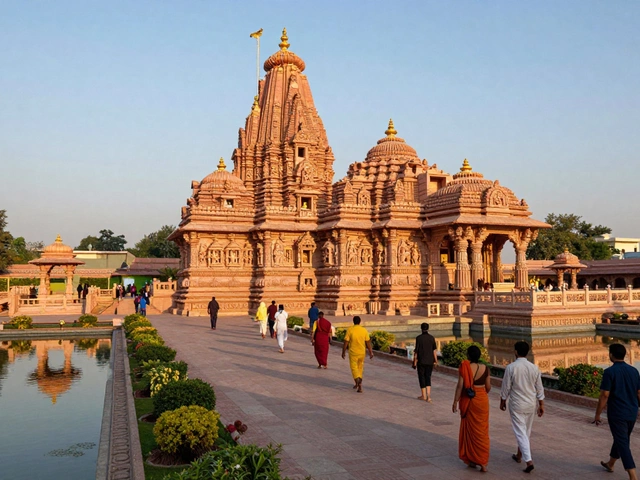India is a land where history whispers through the walls of ancient structures, and where culture exudes in every nook and cranny. The nation proudly houses several UNESCO World Heritage Cities, each telling its own captivating tale. These cities are not just vital parts of India's history, but also alluring destinations for those seeking to dive into the depths of cultural heritage.
Among these, Jaipur, often referred to as the 'Pink City,' stands out with its majestic forts and vibrant markets. Meanwhile, Varanasi, one of the world's oldest living cities, offers a spiritual journey with its timeless ghats by the River Ganges. Exploring these cities is like stepping into a living museum where the past and present coexist in harmony.
Preserving these sites is crucial, as they offer profound insights into India's remarkable journey through ages. By visiting and appreciating these heritage cities, we not only immerse ourselves in rich narratives but also contribute to safeguarding their legacy for future generations.
- Introduction to UNESCO Heritage Cities
- Jaipur: The Pink City's Rich History
- The Spiritual Allure of Varanasi
- Preserving India's Heritage
Introduction to UNESCO Heritage Cities
UNESCO World Heritage Cities form an integral part of the global cultural and natural heritage. Recognized for their outstanding value to humanity, they are pivotal in preserving human history through their tangible and intangible attributes. In India, a country teeming with myriad cultures and traditions, these heritage cities illuminate the past like beacons, offering both scholars and tourists rich insights into the diverse narratives that shape its history. At the heart of these cities lie structures and landscapes that have witnessed the ebb and flow of time, remaining resilient and vibrant throughout centuries.
Among the countless treasures within India, some cities have been honored with the UNESCO tag, making them globally significant. This recognition calls attention to their exceptional architecture, which ranges from grandiose forts and palaces to intricate temples and timeless ghats. For instance, Jaipur, famously known as the Pink City, amazes with its harmonious blend of ancient and modern urban planning. The city is a living testament to the royal legacy, established by Maharaja Jai Singh II, where traditional markets hum with life beneath the shadow of imposing forts and palaces. The vibrant colors of Jaipur present a striking contrast against the arid backdrop of the surrounding desert, making it an ideal destination for every history lover.
Why UNESCO Heritage Matters
These UNESCO designations are crucial not just for their recognition but also for ensuring the protection and conservation of these sites. By being part of this global roster, they receive attention that fosters local and international collaboration in preserving cultural legacies. As we stand at the crossroads of modernity and tradition, preserving heritage city India is more important than ever. The stories and styles encapsulated within these cities serve as educational resources that link generations, providing continuity amidst change.
As part of their commitment, the Indian government, alongside various stakeholders, dedicates efforts both in terms of policies and ground-level activities to protect these historical cities. According to the UNESCO report of 2023, India’s heritage cities face challenges such as urbanization and climate change, demanding innovative and sustainable solutions. In addition, engaging local communities by raising awareness about the importance of heritage conservation plays a pivotal role in ensuring the survival of these valuable sites. Encouraging tourists to visit respectfully and endorsing resolutions for preserving these cities aids in maintaining their splendor for future generations.
"The value of heritage cities is not merely in their aesthetic beauty but in the stories they tell about our journey through time," stated a UNESCO representative during the World Heritage Cities Conference. This highlights the indispensable role these cities play in connecting us to our roots and inspiring future cultural and historical explorations.
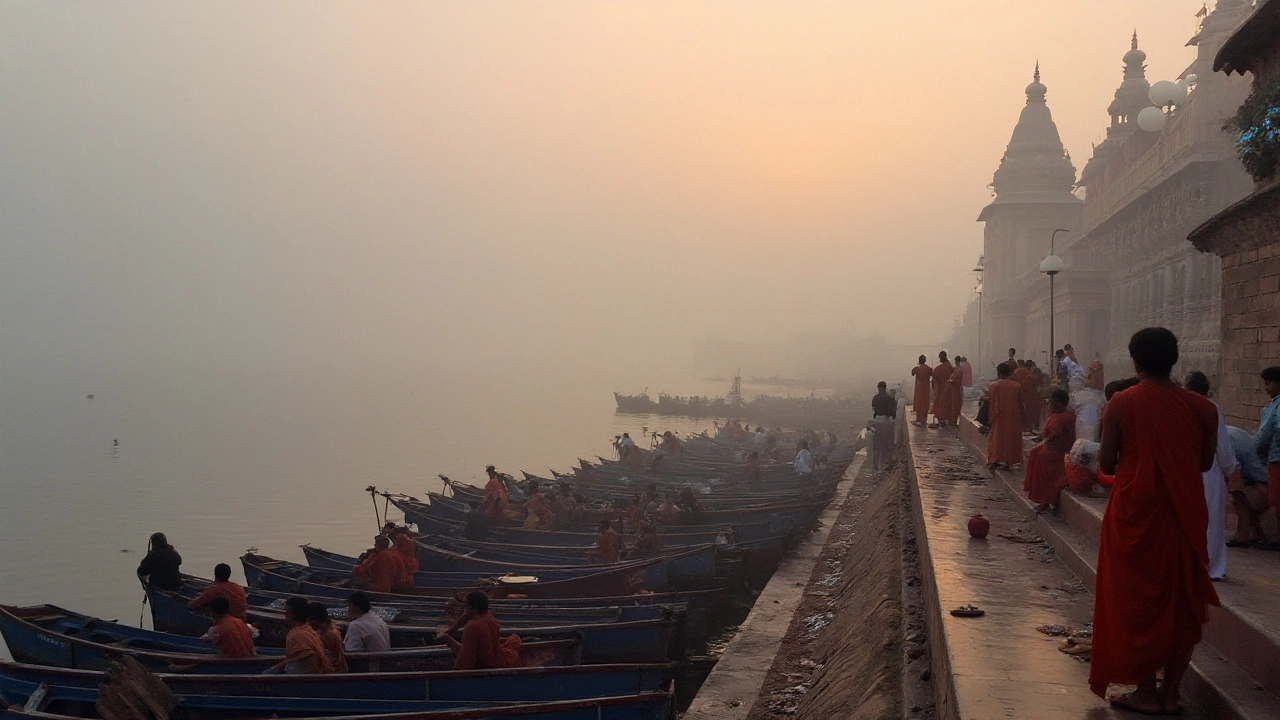
Jaipur: The Pink City's Rich History
In the land of kings and warriors, Jaipur finds its place as a masterpiece of architecture and color. Known as the 'Pink City', it was founded in 1727 by Maharaja Sawai Jai Singh II. The city was strategically planned due to the scarcity of water sources. Charming pink hues adorn the walls, a gesture of welcome to the Prince of Wales who visited in 1876. The tradition continues, captivating visitors from every corner of the globe. Jaipur's design followed traditional Indian Vastu shastra and was fortified with seven gates spread throughout its perimeter.
Wandering through the streets, one's eyes are drawn to the brilliant pink sandstone used extensively in structures. One cannot help but marvel at the City Palace, a blurring testament of history and royalty and still home to the royal family. The Hawa Mahal, with its 953 intricately carved windows or 'jharokhas', was constructed to allow royal women to observe street festivals unseen. Albert Hall Museum, being the oldest museum in the state, houses a vast collection and tells many untold stories of ancient India. It displays a mosaic of cultures and influences stemming from medieval to modern times, making Jaipur a true global heritage site.
Among Jaipur's notable spots is the Jantar Mantar, an astronomical observatory that stands as a UNESCO recognized monument. The intricate instruments within it are designed to capture astronomical positions with naked eyes and stand as a testament to the scientific prowess of its era.
"The Jantar Mantar are great instruments for astronomers who wish to have measured everything," as mentioned by historian Dr. Kusum Manohar.The wonder lies not only in what it achieves but also in its bountiful beauty, which defies modern comprehension. Unraveling the tale of Jaipur is a journey through India’s vast epochs, from Mughal clout to Rajput glory.
Understanding the pulse of Jaipur's history leads to appreciation of modern endeavors aimed at preserving it. The balance between Jaipur's ancient charm and rapid urban development is crucial. Continuous efforts are being made by the local government to encourage responsible tourism. Events such as the Jaipur Literature Festival bring a touch of modern elegance to the city’s ancient backdrop, alluring a promising future tethered to its illustrious past. It is a safe playground for every heritage enthusiast yearning to delve deep into India's cultural richness.
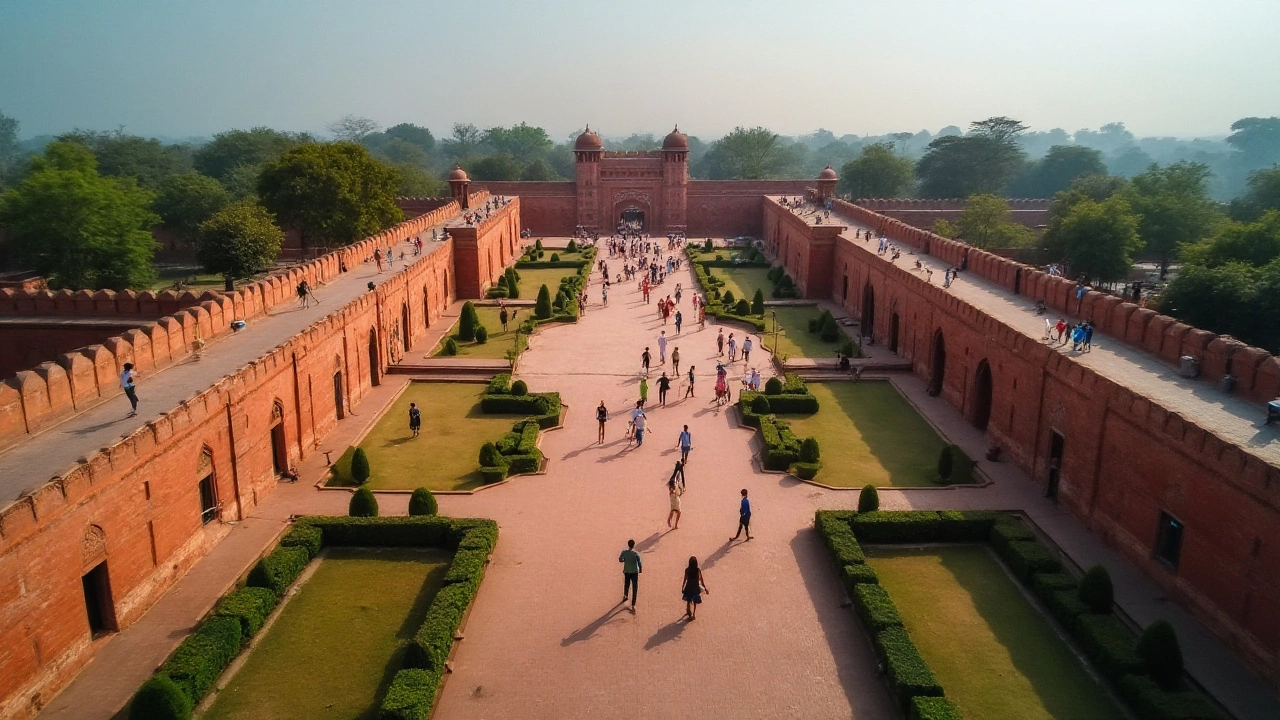
The Spiritual Allure of Varanasi
The mystical city of Varanasi, often heralded as 'the spiritual heart of India,' has captivated the minds of pilgrims, scholars, and travelers for centuries. This city, nestled on the banks of the sacred River Ganges, is one of the most ancient and continuously inhabited places on Earth. Its streets, steeped in myth and legend, offer a profound sense of spirituality that transcends the ordinary. The ghats of Varanasi, around 88 in total, play a central role in this spiritual tableau, where daily rituals and ceremonies unfold at dawn and dusk.
As the sun rises, the ghats come alive with locals and visitors dipping into the holy river, believing in its purifying powers. People chant hymns, and the aroma of incense wafts through the air, enhancing the city's ethereal aura. Among the most famous is the Dashashwamedh Ghat, where the majestic Ganga Aarti takes place every evening. This spectacle, with priests swinging lit lamps and chanting in harmony, is a deeply moving experience observed by thousands each day, a testament to Varanasi's unbreakable bond with spiritual practices and traditions.
Walking through the labyrinthine alleys, one encounters numerous temples, the most revered being the Kashi Vishwanath Temple, dedicated to Lord Shiva. Believed to be the center of worship for over a thousand years, it's an integral part of Hindu mythology and rituals. Legends tell that a visit to Varanasi and its holy places ensures liberation from the cycle of life and death, making it a paramount spiritual destination. Varanasi is not just a city; it is an experience that offers solace and enlightenment to weary souls searching for deeper meaning.
"Varanasi is older than history, older than tradition, older even than legend, and looks twice as old as all of them put together." - Mark Twain
The city also attracts seekers of different faiths and beliefs, exemplifying India's historical openness to diverse spiritual influences. The vibrant colors of Varanasi, the continuous chanting of mantras, and the myriad activities around the ghats create a serene yet energetic ambience that resonates with the energies of the universe. Its allure is not just in its physical form, but in the invisible threads of spirituality that weave through every moment experienced here.
As a UNESCO Heritage City, Varanasi represents not only India's profound religious significance but also its resilience in preserving age-old traditions amidst modernization. Cultural festivals held here, such as Dev Diwali, transform the ghats into a sea of lights, stunningly casting reflections on the Ganges waters—a sight said to be unforgettable. For anyone exploring cultural sites in India, Varanasi presents an opportunity to step into a sacred space that has played host to countless faithful journeys over millennia.
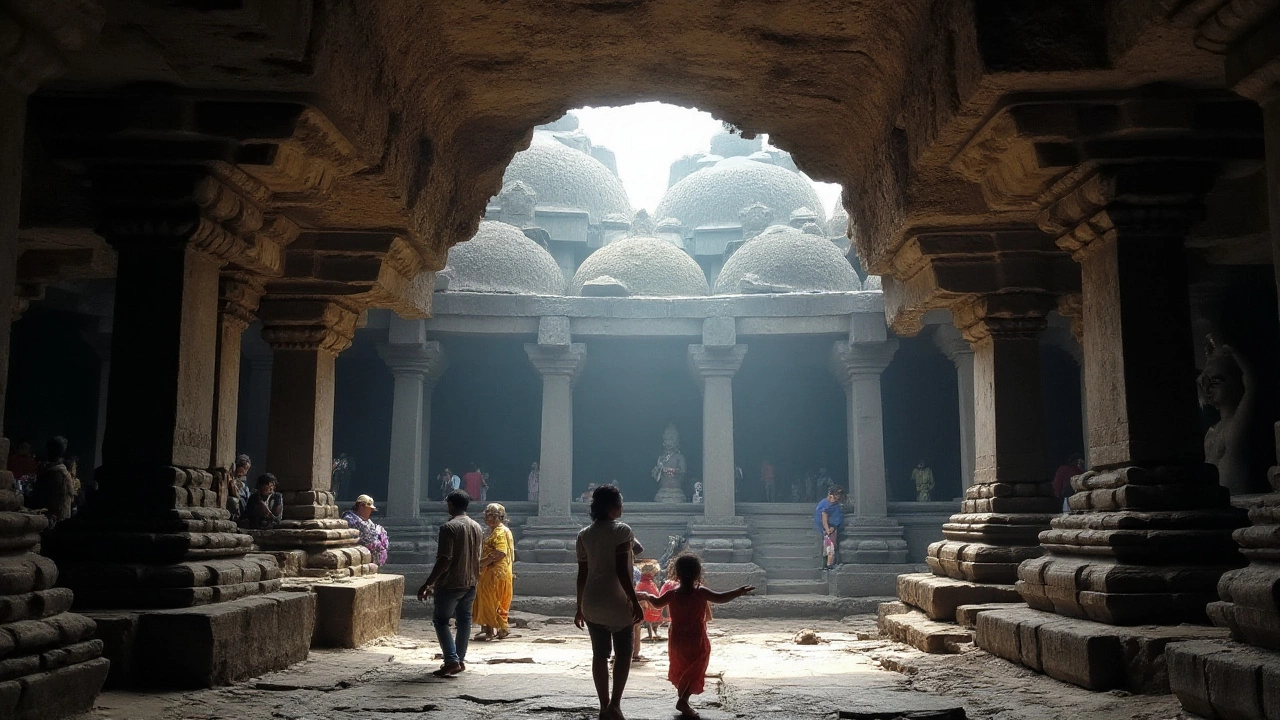
Preserving India's Heritage
Preserving India's rich tapestry of cultural heritage is of paramount importance. This effort ensures that the stories of ancient civilizations reach the hearts of future generations. While the role of institutions like UNESCO in identifying and safeguarding such sites is indispensable, conservation is a collaborative endeavor that involves governments, local communities, and passionate individuals. A key challenge lies in bridging the gap between maintaining traditional practices and embracing modern conservation techniques. From stone restoration to digital documentation, each strategy has its place in the preservation toolkit.
An interesting fact to note is that UNESCO has listed 40 cultural and natural properties in India as World Heritage Sites as of 2023. The significance of these sites transcends borders, as they add not only to India's identity but also to the world's collective cultural conscience. The famous Amer Fort in Jaipur and the spiritual streets of Varanasi are just examples, captivating the imagination of travelers worldwide. Yet, such sites are vulnerable to threats, including environmental degradation and unchecked urbanization, necessitating vigilant protection efforts.
Community Involvement and Education
Local communities often hold the key to successful preservation, having lived in harmony with these sites for centuries. Encouraging locals to participate in conservation activities enriches them with ownership and pride in their heritage. Educational initiatives play a crucial role, enlightening young minds about their history and instilling a sense of responsibility. Schools incorporating heritage awareness in their curriculum create knowledgeable overtones that ripple across communities. "Preservation of cultural heritage starts with awareness. Community engagement is imperative," says Dr. Rina Banerjee, a renowned conservationist. Her words encapsulate the heart of heritage preservation – the involvement of each stakeholder in cherishing and safeguarding shared legacies.
Innovative technologies also drive effective preservation outcomes. The use of 3D scanning and virtual reality not only aids in documenting heritage sites but also offers immersive experiences to those unable to visit. These technologies act as bridges, connecting the past to the present and beyond. It creates a balance between accessibility and privacy, respect and revelation, where sites are protected without losing their aura of mystery.
Balancing Development and Conservation
The dynamic tension between urban development and site conservation is a story as old as the cities themselves. Rapid urbanization often poses risks to historical landscapes, necessitating stringent regulatory frameworks. Laws and guidelines, robust and clear, buffer these sites from negative impacts. However, the essence lies in design that considers both community benefits and historical integrity. Implementing eco-friendly tourist initiatives ensures sustainability, providing nurturing care to heritage. Precious resources allocated for maintenance aim at retaining the original facade and essence of the sites without compromising on visitor experience.
Ultimately, the act of preserving India's heritage is a poignant dance of collaboration, technology, education, and passionate care. It is as much about protecting the physical remnants of the past as it is about nurturing the beliefs, rituals, and knowledge passed down through generations. Heritage, therefore, remains a shared responsibility, an unending legacy to be cherished, celebrated, and protected diligently, making sure it continues to inspire and educate in the ages to come.
